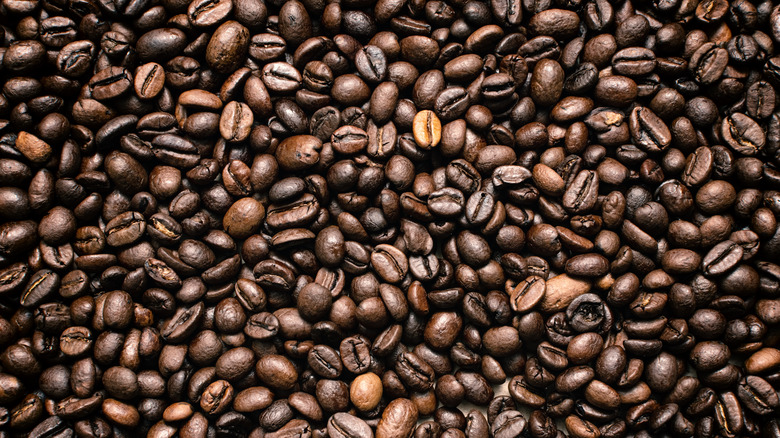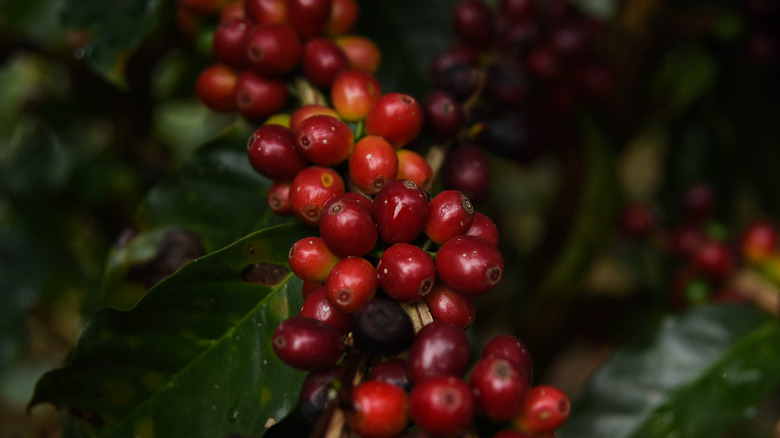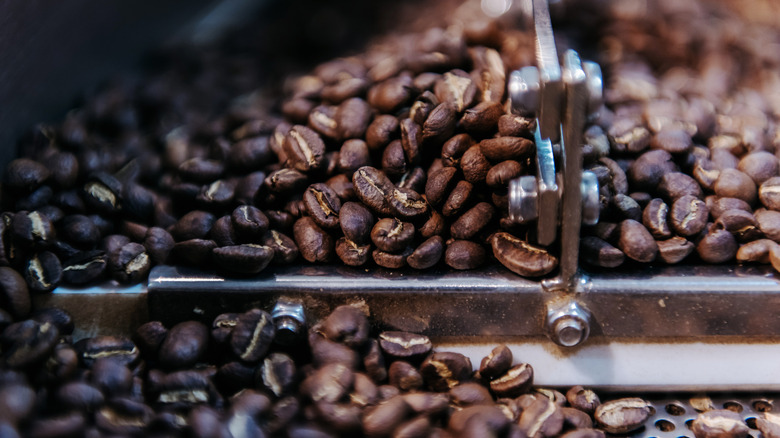Turns Out Coffee Beans Aren't Actually Beans
Coffee consumption has reached new heights in recent years. In 2020, the National Coffee Association (NCA) released a comprehensive study on American coffee intake, not only finding that seven in ten Americans drink coffee every week and 62 percent drink it every day, but that the average American coffee drinker consumes just over three cups a day. That's a lot of joe.
From specialty espresso beverages like lattes and cappuccinos to just plain old drip coffee, it's clear that Americans enjoy their caffeine. But unless you work somewhere in the coffee industry as a grower, producer, or roaster — or maybe you just have a plethora of knowledge on obscure coffee facts — chances are you might not have a clear picture in your head of what coffee beans look like before they're roasted into their golden brown form you see and smell at Starbucks. Hint: they aren't actually beans at all.
Where do coffee beans come from?
Believe it or not, coffee is actually a fruit (via the La Colombe blog). Like apples, oranges, and pears, coffee fruits grow from trees and produce seeds that, upon undergoing the arduous process of drying, "pulping" and roasting, become the aromatic beans we brew in a Keurig to start our day.
In its natural, untouched form, a coffee fruit looks almost like a cherry or grape. It grows in bunches on a variety of coffee plants – Arabica is a term you've probably heard tossed around if you're a coffee drinker — and, when raw, is bright green. In its ripest form when it's ready to be harvested, a coffee fruit will boast hues of deep red and purple, according to WebMD. When it reaches peak ripeness, the red, juicy crop is picked, seeds extracted, and fruit discarded before moving along in the production process.
This is how coffee beans get their flavor
The flavor of your favorite brew starts, first and foremost, with the coffee fruit and where it is grown. Most coffee plant varieties are grown in South and Central America, the Caribbean, Africa, and Asia (via coffee&health), and because the growing climates and conditions of these environments fluctuate by geographic location, the taste of the final product can vary as well.
Things get slightly more complicated with roasting, grinding and brewing methods. Coffee comes in a handful of different roasts, popular kinds being dark, medium, and light. Each has its own levels of brightness and body that taste unique on the palate. Where dark roast is roasted longer for a darker color and full-bodied flavor, lighter coffee spends less time roasting, which results in lighter colored beans and a brighter, more acidic taste (via WebMD).
Because your coffee beans do indeed start off inside a coffee fruit, they naturally produce floral, fruity flavors. Over the years, it's been popular in the industry to roast beans dark to express notes of chocolate and caramel, but fruity coffees are on the upswing. Per the La Colombe blog, roasters are starting to pay more attention to these organic flavors — coffee can actually be brewed to taste like lemon zest or plum juice quite naturally, without any need for sugar-dense syrups.


